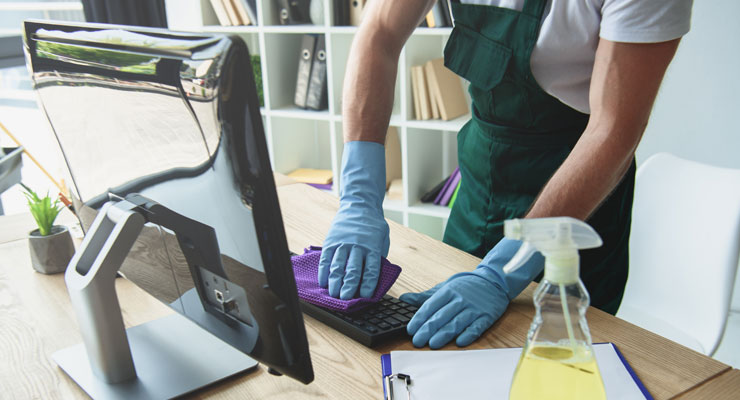 Written by: Leigh Perkins // Mar 6, 2020
Written by: Leigh Perkins // Mar 6, 2020
Last updated: Jan 17, 2023
When your team meeting takes place around the foosball table or your office features a meditation studio for midday re-centering, there can be no question that the workplace is transforming into a more creative, active, human-focused environment. But what’s the business advantage of converting your office into an anti-office, part-time pool hall, part-time tasting room? Are cool places to work (with wine, yoga, and table tennis) really changing corporate culture? The answer might surprise you.
How the Modern Workplace Became a Mini-Playland
It is with no small measure of irony that we can thank tech geeks, often disparaged for being counterculture slacker introverts, for bringing the fun to the American office. To traditionalists, it seemed like a fringe concept when startups added gaming consoles to their conference rooms and a cereal bar to their breakrooms, just an oddball perk for people who worked late into the night writing code. But a funny thing happened. Everyone liked it. And corporate America took notice.
Perhaps no single organization has done more to elevate and normalize the fun factor at work than Google. In 2005, Google commissioned a redesign of its Silicon Valley complex, with a university campus as its inspiration. Cue the giant rubber balls, free laundry rooms, sand volleyball courts, scooter runs, nap pods, slides, and dozens of on-campus cafes. Playfulness, experimentation, collaboration, and youthfulness are all part of the Google ethos, so it made sense for the Googleplex to reflect those values. It also made sense that other digital companies would want to follow Google’s lead. The office as quasi-playground became (and remains) a thing.
You Don’t Need a Sprawling Corporate Campus to Be Cool
Tech still leads the way in making the workplace fun. Witness the bowling alley at Infosys, the work cottages (instead of cubicles) at Pixar, on-site acupuncture at Twitter, private concert space at Spotify, a rooftop dog park at Zynga, and, at any dot-com worth its salt, multiple Xbox stations in case a UX designer needs a little downtime.
Though not every organization splurges on a Google-size putting green, climbing wall, or massage studio, almost every office gives a nod to cool in the break room. No longer a saggy tucked-away spot with a sad coffeepot, today’s break room is likely to feature a cappuccino machine, organic snacks (free food is a hallmark of the startup culture), and low-stakes touchpoints to connect and calm employees – an ongoing jigsaw puzzle or chess board, seating for lunch-and-learn get-togethers, a collection of yoga mats in the corner, possibly a beer cart on Fridays. Somewhere, a software developer deserves a round of applause for inadvertently overhauling our collective concept of the break room merely as the place to microwave popcorn.

Can Table Tennis Really Improve Your Culture?
It is an important distinction: A cool office space should reflect your company’s culture. It shouldn’t be mistaken for the culture itself. An infrared sauna in the break room and endless edamame on the conference table does not automatically indicate your employees have a manageable workload and great maternity leave. If you don’t have engaged managers, fantastic benefits, equitable pay, transparency, and shared goals, your culture is going to need more than a companywide Wii baseball tournament to set it right.
For offering perks as a reinforcement of (not a substitute for) its corporate culture, once again, Google models the standard. The company consistently ranks among the tech companies with the best corporate culture, not for its for free Cheerios or its on-site dry cleaner, but for flexible scheduling, diverse hiring practices, generous pay, work-life balance, and a management system built on respect for and trust in the genius, creativity, and values of its employees. That is the stuff of a healthy culture. The swinging bridge to the Zen room? It’s undeniably cool, but it’s not your culture.
For small-scale perks at organizations that are not Google, the trappings of a “fun” place to work can be easy to install and relatively inexpensive to maintain. After all, plopping a Pac-Man in the corner doesn’t take much effort, but if you want to build an organization that truly does right by your employees, you must do the hard work of creating a corporate culture, and only then worry about getting estimates on the soft-serve ice cream bar.
Here’s Where Cool Office Perks Matter Most
Beyond serving as a metaphor for your company ethos, fun workplace perks unquestionably provide business advantages in two key areas: recruitment and retention.
Recruitment: A Cool Workplace Makes Hiring Easier
Recruitment has never been more competitive. If Company A has 309 online reviews for its awesome vegan cafeteria and its free shuttle service, it’s a good bet that human resources at Company B wants an organic cafe and a ride-share program to pitch to prospective employees, too. Competing for top talent might begin with presenting a challenging, well-paid position, but ultimately it could rest on the poker table in the employees’ lounge or the skills of the staff sommelier serving Friday Night Wine Flights. These might not be the metrics that matter to HR, but they might seal the deal for the candidate you’re gunning to hire. The opposite is also true: Not having a playland vibe can send up red flags for a subset of potential hires.
Note that this subset does not include every generation of workers. A cool office with a lively game room is particularly appealing to younger job seekers, who tend to look at the office as an extension of their personal lives. It is no coincidence that the soil in which the fun workplace took root – the tech industry – is overwhelmingly skewed to a single demographic: male (70 percent) and young (median age: 30 or younger). Thus, Call of Duty marathons and IPA happy hours. If your office hires more broadly than this, it might serve you to consider in workplace perks.
Retention: ‘Fun’ Helps You Keep the Staff You Have
Millennials make up the largest pool of employees, so they do have an outsize influence on your office ecosystem. On the plus side, they’re digital natives who want to do meaningful work that makes an impact on the world and aligns with their values. On the minus side, they are disinclined to stick around if a better offer comes along.
So, can fun and games help you hang on to good employees? Maybe. Millennials are not shallow enough to consider a billiards room incentive enough to jump ship, but they do assign perceived value to a corporation that does (or doesn’t) consider a modern, fun workspace essential to its employees. The bottom line: Keeping happy teammates on staff requires professional development, fair pay, and promotions. But a nap hammock can’t hurt.

How Much Fun is Too Much Fun?
Once a quarter at most companies, team-building outings inject joy, camaraderie, and decompression. Game rooms and Tai Chi Tuesdays do the same on a more regular basis. The key is balance. You want your company to be perceived as merry and collaborative, but also mature and trustworthy. Perhaps skateboarding down the hallway to a company kegger is a bit too frat house for your organization, but there are fun freebies and cool design elements that will work for any office. Pick appropriate perks for your industry and your team.
Your staff just might be more engaged on the job if they worked for, as Deloitte puts it, an irresistible organization. Employee engagement is linked to increased profitability, improved quality of output, and reduced absenteeism.
If you still have your doubts about the merits of the game room, take a deep dive into the research around that netted green symbol of the startup universe, the pingpong table. More than just the modern-day watercooler for the cool kids in the office, table tennis serves as a valuable tool for interaction and shared experience, minus the awkwardness of a mixer or the stress of an official meeting.
And it’s good for your brain. Playing table tennis gets your prefrontal cortex fired up, which stimulates strategic planning. It’s a little aerobic, which gets your hippocampus’s attention. Scientists and software developers everywhere agree: A quick game to 21 is nothing short of a miracle of productivity and creativity.
USF Can Help You Have More Fun at Work
If you’re missing the fun factor in your office, maybe it’s time to learn some new skills and develop your leadership potential. The Office of Corporate Training and Professional Education at USF offers market-relevant courses and certification in project management, human resources, process improvement, and hospitality leadership.


